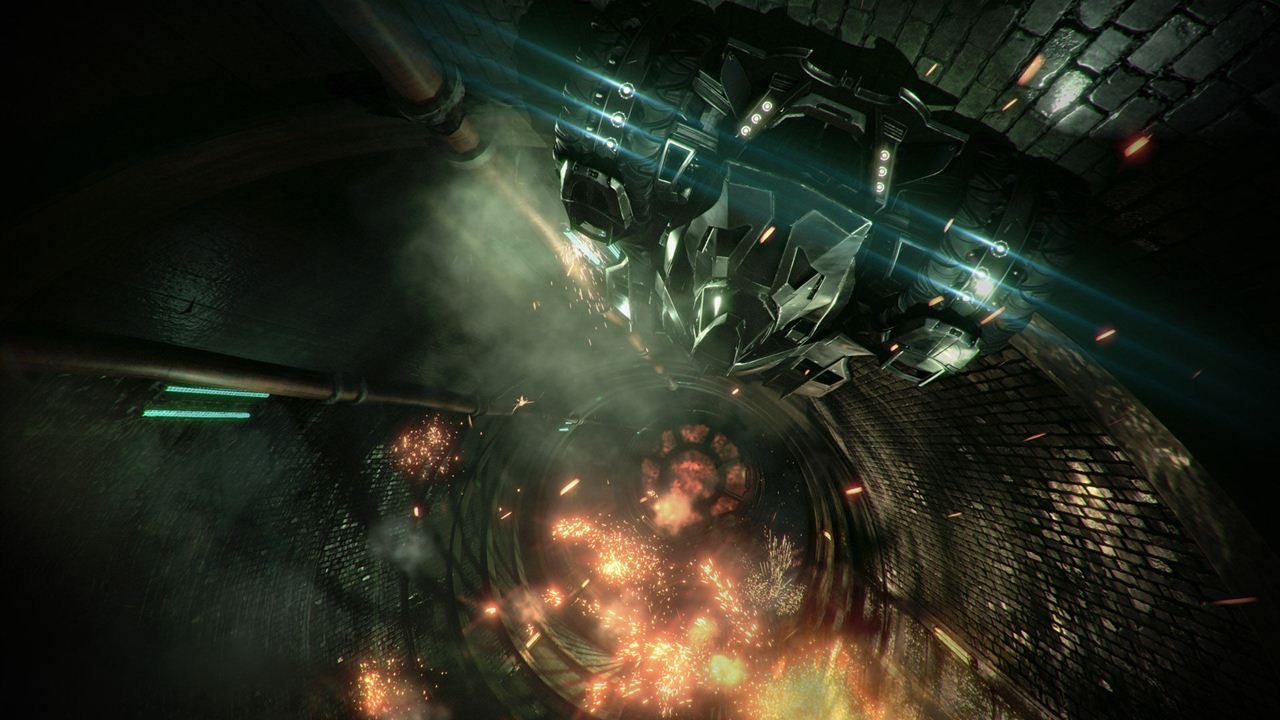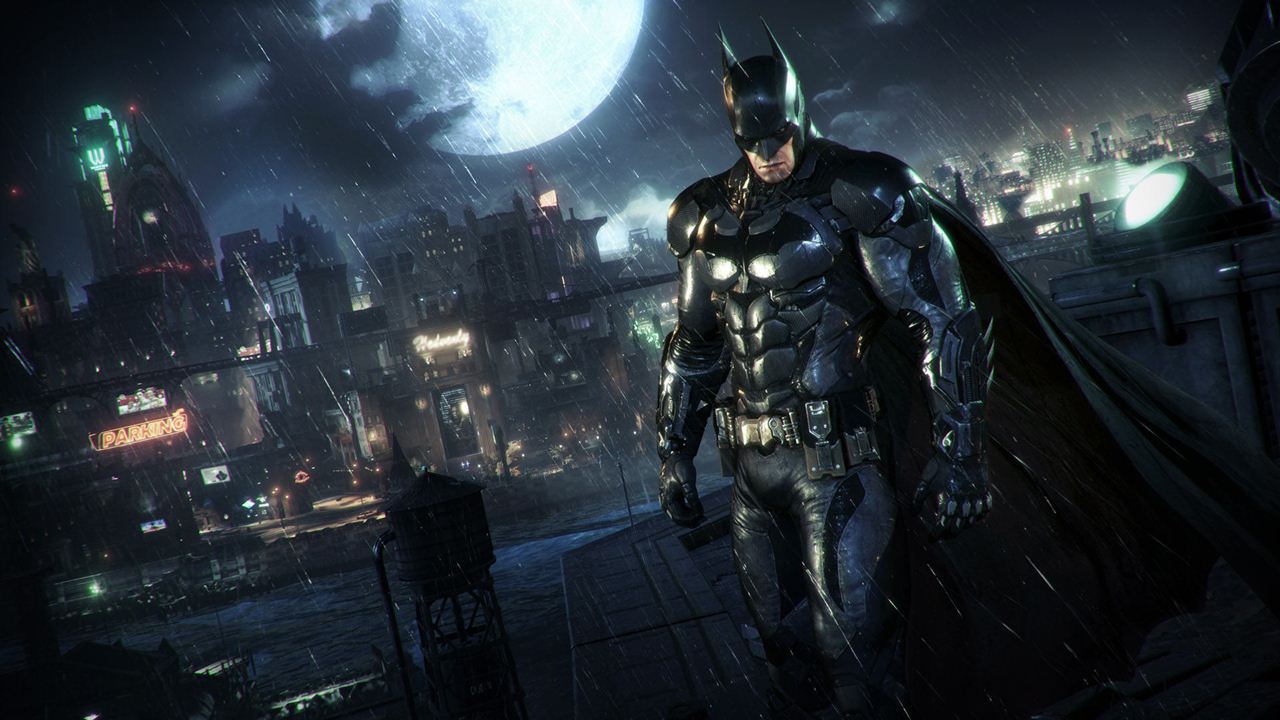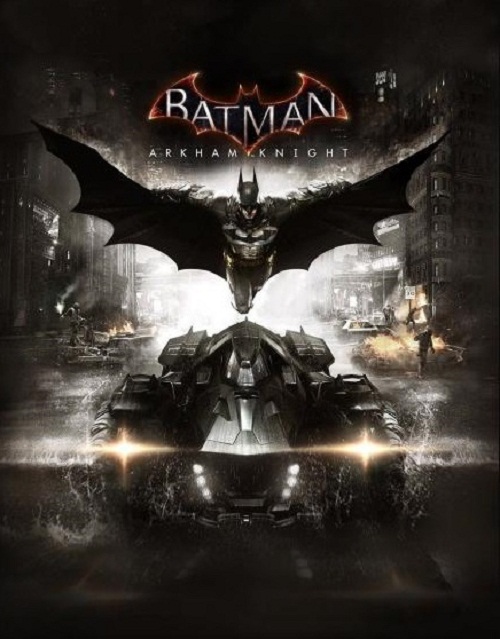
There are many questions I have after finishing the core story for Rocksteady’s Batman: Arkham Knight. Along with the impressive visuals, which you really have to back and play Arkham Asylum/City to appreciate, the spectacular presentation feels more DC-ish than ever. Very few punches are pulled in terms of the plot, there’s a hefty amount of back-story that many fans would never have known about Batman which is masterfully introduced and once again, there’s a lot to do in this open world.
However, one aspect of Arkham Knight stood out above everything else – namely how different it was to Rocksteady’s previous games. “Different” is probably a subjective term. When playing Arkham Origins, one of the bigger complaints was it essentially being Arkham City with a smaller world and more snow.
"Thinking back though, it's not as if the learning curve was significantly higher. There were some new special moves you could perform, some which turned the tide of battle, but you were still relying on the basics of countering, stunning and beatdowns to finish the job."
Some slight modifications were made to combat here and there and the story-telling started to show a more personal touch (despite still being crammed to the gills with villains, some fairly inconsequential). However, overall, it was a game you got into because you liked the Arkham series and wanted more of the same.
When playing Arkham Knight, there were several elements that carried over from the previous games. Gliding, grappling and the free flow combat are a few examples. However, Rocksteady chose to change a lot. More importantly, not all of those changes could be viewed as inherently “positive”.
For example, the combat was expanded significantly since the previous game to include environmental takedowns, directional counters that causes more damage than simple counters, Fear takedowns, weapons, dual takedowns, heavy enemies with shock weapons, enemies with shock shields, heavy enemies with shields, heavy enemies with blades, heavy enemies with shields/shock/blades, medics that can revive their comrades, ninjas that can sidestep during counters and more. It’s a lot to take in and doesn’t necessarily include enemies with guns at times.
Thinking back though, it’s not as if the learning curve was significantly higher. There were some new special moves you could perform, some which turned the tide of battle, but you were still relying on the basics of countering, stunning and beatdowns to finish the job. Of course when things got fairly hectic, there were always ways to even the odds. In many ways, the fights reminded me less of Arkham City – which devolved into “hit, counter, hit, hit, hit, counter, beatdown, shield stun” even in the late game – and more of Middle Earth: Shadow of Mordor. That game was more imperative since there were things you simply couldn’t do, enemies you couldn’t harm or counter or anything. There’s far more thinking involved in Arkham Knight and you just can’t blindly punch your way out of fights.
"There's already a fair amount of discussion on a major character's appearance from the beginning. Personally, it was intriguing to how Rocksteady managed to fit this into the context of everything else. Even more amazingly, it played into the gameplay and allowed us a look into the psyche of Batman, particularly when it came to Oracle."
Boss encounters are also surprising this time around. I haven’t gone about arresting Gotham’s Most Wanted but the most memorable boss fights in the story are with the Arkham Knight. The biggest tank battle involves the Knight and the end-game battle mixes predator combat with ingenuous navigation. This is much different from the final battle with Clayface in Arkham City or even the Joker in Arkham Asylum. I don’t know if the lack of filler battles in the main story would have been preferred by some players.
But it just strikes me how much content in Batman: Arkham Knight is optional. The Witcher 3: Wild Hunt was a game that encouraged exploration because it would ultimately help level you up and provide better equipment. In Arkham Knight, you’ll come across several new mission types during the campaign and have an option to hunt for more of the same in your spare time. Not a fan of destroying APCs in high speed chases or playing Horde mode against tanks? Go solve some murder mysteries or chase after Firefly. Stumped by the Riddler’s puzzles but still interested in dual play? Follow up on leads with Nightwing and play as the original dynamic duo.
There’s already a fair amount of discussion on a major character’s appearance from the beginning. Personally, it was intriguing to how Rocksteady managed to fit this into the context of everything else. Even more amazingly, it played into the gameplay and allowed us a look into the psyche of Batman, particularly when it came to Oracle. One of the major plot points that involved saving Oracle aka Barbara Gordon and I couldn’t help but wonder what it was that made her so important. As a fan of the Batman series, Barbara’s character is arguably one of the most revered and loved. I had my reservations about whether Arkham Knight would see her demise but it’s to the credit of the story-telling that it made me believe she was in grave danger throughout.
The kicker of it all? The game threw shade several times on the terrible things that could befall Barbara, even going back to the iconic Killing Joke scene that saw her paralyzed. It did not, contrary to what you’d expect, want you to feel sympathy for a heroine, that too one that was wheelchair-bound. On her rescue, Barbara reminded Batman – and the audience – that, “You don’t have to worry about us, or feel responsible. We’re fighting with you, not for you, okay?” This isn’t a martyr or a damsel in distress or even another death Batman has to feel guilty about – Barbara, like many of the heroes in Arkham Knight, are soldiers who believe in what’s right and won’t give in to fear. Not even if it kills them.
"Whether you'll go for it or not is ultimately up to the kind of experience you were expecting. I didn't think that Arkham Knight would just try to be Arkham City on current gen platforms and though I welcomed the usage of the Batmobile, the tank battles admittedly felt bit much at times."
Again, this doesn’t make for a typical Batman versus cadre of supervillains storyline. It makes for something special, something that makes you really sit back and think why you should care about these characters.
When you talk about new things, then the Batmobile inevitably comes up. One has already witnessed severe criticism against Arkham Knight for the Batmobile and its constant usage in-game. Whether you’ll go for it or not is ultimately up to the kind of experience you were expecting. I didn’t think that Arkham Knight would just try to be Arkham City on current gen platforms and though I welcomed the usage of the Batmobile, the tank battles admittedly felt bit much at times. However, on another occasions I loved using the Batmobile to solve puzzles and engage in epic, memorable sequences – some involving stealth – which wouldn’t have been possible on previous gen consoles. You can’t ignore the missteps but then again unlike, say, Shenmue 2, the ratio of tedium to excitement in much of the new content is very well handled.
That being said, Batman: Arkham Knight may not be Game of the Year because it doesn’t break tons of new ground. What it does it offer several fresh new instances within an established formula that further expand on the Batman universe. How much you want to experience is up to but really, Batman: Arkham Knight also challenges your preconceptions of what you can do in a Batman game. It probably echoes Arkham Asylum and the series in general more than we’d care to think.

















